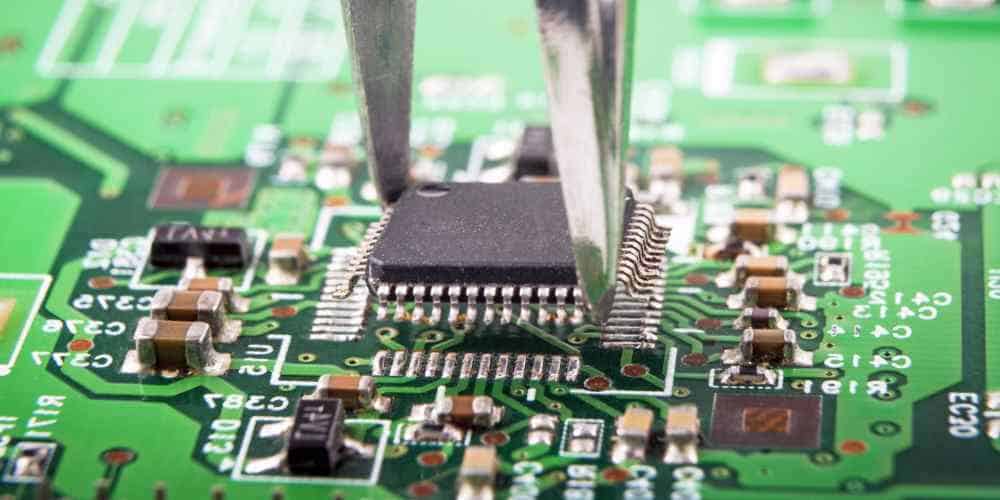Printed Circuit Board (PCB) Surface Mount Technology (SMT) Assembly is a vital process in the manufacturing of various electronic devices. The SMT assembly process involves placing tiny electronic components, such as resistors, capacitors, and integrated circuits, onto the surface of a PCB. This process is highly automated and involves the use of advanced machinery and equipment to ensure precise placement of electronic components.
PCB SMT assembly is a critical process in the manufacturing of electronic devices, as it helps to ensure that the devices function as intended. The SMT assembly process is highly efficient and cost-effective, as it allows for the placement of multiple components on a single board. This process also allows for the creation of smaller and more compact devices, which is essential in the development of modern technology. Overall, PCB SMT assembly plays a crucial role in the production of electronic devices and is an integral part of the electronics manufacturing industry.

PCB SMT Assembly Process
Solder Paste Stenciling
The first step in the PCB SMT assembly process is the application of solder paste onto the board. This is done using a stencil, which is a thin sheet of metal with cutouts that correspond to the placement of the components on the board. The solder paste is applied to the stencil, and a squeegee is used to force the paste through the cutouts and onto the board. The stencil is then removed, leaving behind a layer of solder paste on the board.
Pick and Place
The next step is the placement of the components onto the board. This is done using a pick and place machine, which uses a vacuum to pick up each component and place it onto the board in the correct location. The machine uses a vision system to ensure that each component is placed accurately and that there are no defects or misalignments.
Reflow Soldering
The final step in the PCB SMT assembly process is the reflow soldering. This is where the solder paste is melted and the components are permanently attached to the board. The board is placed in a reflow oven, where it is heated to a specific temperature for a specific amount of time. This causes the solder paste to melt and flow, creating a strong bond between the components and the board.
Overall, the PCB SMT assembly process is a precise and complex process that requires specialized equipment and skilled technicians. However, when done correctly, it can result in high-quality, reliable electronic products.
PCB SMT Assembly Equipment

When it comes to PCB SMT assembly, there are three main pieces of equipment that are essential to the process: the solder paste printer, the pick and place machine, and the reflow oven. Each of these machines plays a crucial role in ensuring that the assembly process is efficient and accurate.
Solder Paste Printer
The solder paste printer is responsible for applying solder paste to the PCB. This is done by using a stencil to apply the paste to the appropriate areas of the board. The printer is capable of applying paste with a high degree of accuracy, which is essential for ensuring that the components are properly aligned during the assembly process.
Pick and Place Machine
The pick and place machine is responsible for placing the components onto the PCB. This is done by using a combination of vacuum suction and mechanical arms to pick up the components and place them onto the board. The machine is capable of placing components with a high degree of accuracy, which is essential for ensuring that the board functions properly once it is assembled.
Reflow Oven
The reflow oven is responsible for heating the board to the appropriate temperature to melt the solder paste and create a solid connection between the components and the PCB. The oven uses a combination of heat and time to ensure that the solder is melted evenly and that all of the components are properly connected.
Overall, these three pieces of equipment are essential to the PCB SMT assembly process. Without them, it would be nearly impossible to assemble a board with the necessary accuracy and efficiency. By using these machines, manufacturers can ensure that their boards are assembled to the highest possible standards.
PCB SMT Assembly Quality Control

Visual Inspection
Visual inspection is a crucial step in the PCB SMT assembly process. It involves examining the surface mount components, solder joints, and other aspects of the PCB for any defects or issues. Visual inspection is typically done by trained technicians who use specialized equipment such as magnifying glasses, microscopes, and cameras.
During visual inspection, the technician checks for issues such as:
- Misaligned components
- Poor solder joints
- Solder bridges
- Tombstoning
- Component polarity issues
Visual inspection is an important quality control step that helps ensure the reliability and functionality of the PCB.
Automated Optical Inspection
Automated Optical Inspection (AOI) is another important quality control step in the PCB SMT assembly process. AOI uses specialized cameras and software to examine the PCB for defects and issues.
AOI is able to detect issues such as:
- Missing components
- Misaligned components
- Poor solder joints
- Solder bridges
- Component polarity issues
AOI is a fast and accurate way to inspect PCBs, and it can help catch defects that might be missed during visual inspection.
In conclusion, both visual inspection and automated optical inspection are important quality control steps in the PCB SMT assembly process. By carefully inspecting the PCB for defects and issues, technicians can help ensure the reliability and functionality of the final product.
Related posts:
- The Complete Guide to Micro Electronic Assembly and How It is Disrupting the Manufacturing Industry
- Why Blue PCB is Gaining Popularity in the PCB Industry
- What Is The Average Circuit Board Cost, And What Factors Determine The Pricing?
- LTM8033IY#PBF is an EMC-Compatible µModule Buck Converter: Here’s How It Works

